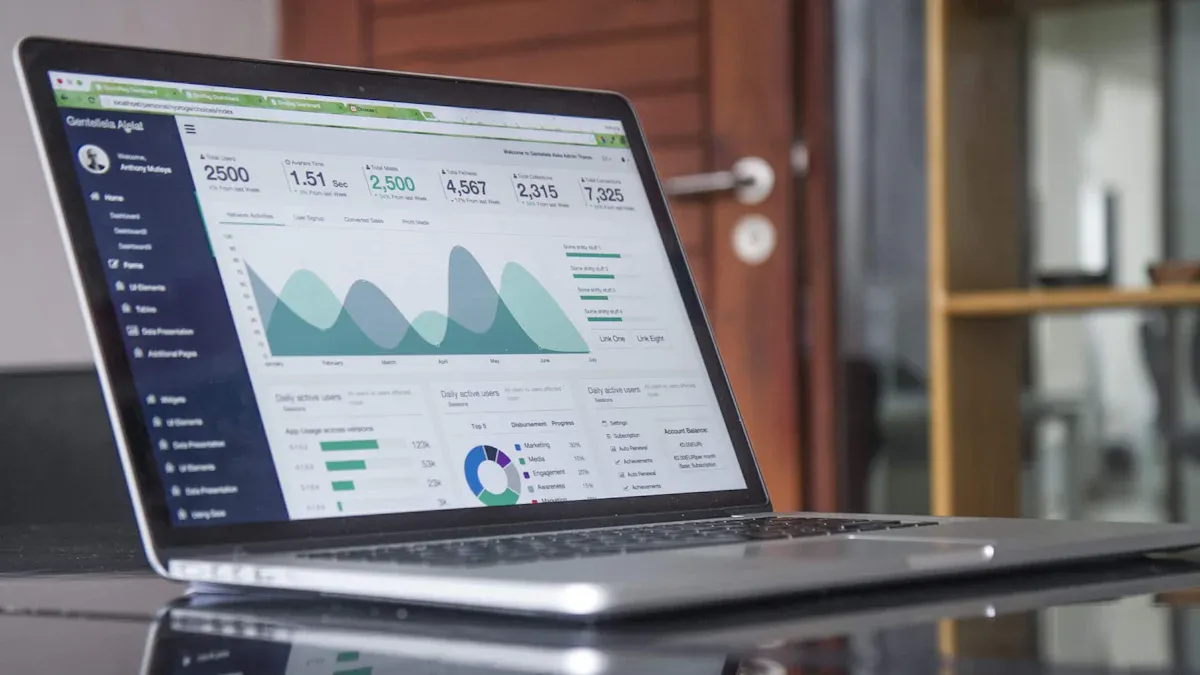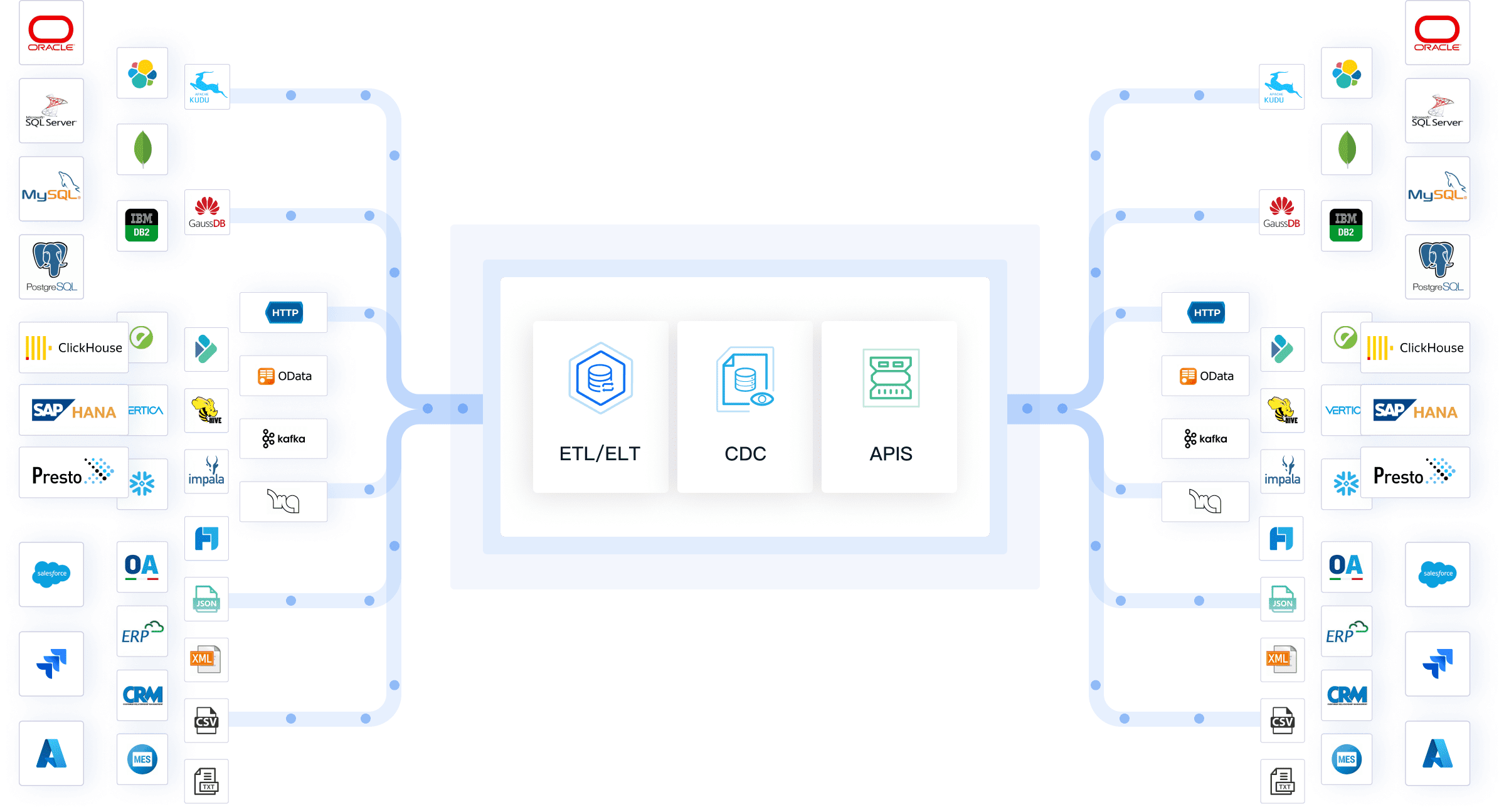You need to focus on several core data governance objectives to drive organizational success: data quality, greater data security, regulatory compliance, data accessibility, operational efficiency, and building trust in data. These objectives support effective data management and enable you to create lasting value from your information assets. When you establish strong data governance, you unlock value creation and improve your ability to make informed decisions.
| Core Data Governance Objectives | Contribution to Business Decision-Making |
|---|---|
| Improved agility of data-driven business decisions | Enables quicker responses to market changes and informed decision-making. |
| Enhanced data quality | Ensures decisions are based on accurate and reliable data. |
| Greater data security and privacy | Protects sensitive information, fostering trust in data usage. |
| Increased operational efficiency | Streamlines processes, allowing for more effective resource allocation. |
| Reduced uncertainty and increased trust in data | Builds confidence in data-driven decisions, leading to better outcomes. |
By meeting these objectives, you transform data into a strategic asset that fuels innovation and long-term growth.
Data Governance Objectives: Data Quality and Trust in Data
Ensuring Accurate and Reliable Data
You need to make sure your data meets strict data quality standards to support your business goals. When you face issues like inaccurate or incomplete data, duplicate records, or inconsistent formatting, your organization risks making faulty decisions and breaking workflows. These problems can lead to customer churn, non-compliance, and even financial losses. High-quality data is essential for informed decision-making. If you ignore data quality, low-quality data can circulate, causing poor business outcomes and missed opportunities. To achieve enhanced data quality and data integrity, you should use methods such as field-level validation, cross-field validation, database constraints, and business rules validation. Standardizing data collection processes and implementing robust data governance objectives help you maintain reliable data from the start.
Building Trust in Data for Business Intelligence
Trust in data forms the foundation of effective business intelligence. When you prioritize enhanced data quality and data integrity, you build confidence in your analytics and reporting. Organizations that recognize the principle of "garbage in, garbage out" focus on data governance and data quality standards. They use data catalogs, automated profiling, validation, and cleansing to ensure accuracy. Appointing data stewards and tracking data lineage further increases trust in data. If you rely on outdated or inconsistent data, you risk making incorrect decisions, losing sales, and damaging your reputation. Trust in data enables you to make strategic choices and respond quickly to market changes.
FineDataLink for Data Quality Management
FineDataLink helps you achieve enhanced data quality and data integrity across your organization. The platform supports real-time data synchronization, ETL/ELT processes, and API integration, making it easier to meet your data governance objectives. FineDataLink improves decision-making, enables better targeting, and supports more effective marketing campaigns. You can see measurable benefits such as increased revenue, cost savings, and a stronger data-driven culture. The platform ensures your data meets high data quality standards, which builds trust in data and gives you a competitive advantage.
| Benefit | Description |
|---|---|
| Improved Decision-Making | High-quality data leads to better insights and informed choices. |
| Greater Trust and Data-Driven Culture | High data quality builds confidence, leading to a culture that relies on data for decision-making. |
| Increased Revenue | Improved efficiency and targeted efforts drive higher sales and opportunities. |

Data Governance Objectives: Greater Data Security and Privacy

Protecting Sensitive Information
You face many threats to greater data security in your organization. Common risks include insider threats, data breaches, advanced persistent threats, IoT attacks, supply chain attacks, cloud vulnerabilities, social engineering, and ransomware. High-profile incidents, such as the Equifax and Capital One breaches, show how damaging a lack of strong data security can be. These events affected millions of people and exposed sensitive information. You need to protect your data by understanding these risks and taking action.
A strong approach to greater data security starts with best practices. You should keep a data inventory, classify your data, and use strong access controls. Encryption protects your data both in transit and at rest. Data loss prevention tools help you monitor and secure information. Regular backups and a recovery plan prepare you for emergencies. Audits and employee training reduce the risk of mistakes. Multi-factor authentication, software updates, and threat monitoring add more layers of protection. The table below summarizes these best practices:
| Best Practice | Description |
|---|---|
| Data Inventory | Track and classify all data assets. |
| Strong Access Controls | Limit access to sensitive data. |
| Encryption | Secure data in transit and at rest. |
| Data Loss Prevention | Monitor and protect data at all stages. |
| Regular Backups | Prepare for data loss scenarios. |
| Audits and Training | Identify vulnerabilities and educate staff. |
| Multi-factor Authentication | Add extra security for access. |
| Software Updates | Apply security patches promptly. |
| Threat Monitoring | Detect and respond to threats quickly. |
| Data Retention and Disposal Policy | Safely manage and dispose of data. |
| Compliance | Align with regulations like GDPR, CCPA, HIPAA. |
Meeting Data Security Standards
You must follow data security standards to achieve greater data security and meet compliance requirements. Different industries have unique frameworks. For example, HIPAA protects health information, while PCI DSS secures payment card data. GDPR sets strict rules for personal data and privacy. Many organizations also use NIST 800-53 and CIS Controls to manage risks. These standards require you to conduct regular risk assessments, gain consent for data collection, and follow clear guidelines for data handling.
| Standard/Framework | Description |
|---|---|
| PCI DSS | Secures credit card data with 12 key requirements. |
| GDPR | Protects personal data and privacy rights. |
| HIPAA | Safeguards patient health information. |
| NIST 800-53 | Manages security and privacy risks for federal systems. |
| CIS Controls | Focuses on critical security controls for IT systems. |
Reducing Risks with Data Governance
You can reduce risks by implementing strong data governance. Effective data governance lowers human error, which causes about 30% of data breaches. Training your staff helps prevent mistakes, such as clicking on malicious links or mishandling sensitive data. Addressing insider threats is also important, as they account for 5% of breaches. You should manage the entire information lifecycle, from collection to disposal, using privacy by design principles.
FineDataLink supports your data governance efforts by providing real-time data integration, automated workflows, and secure data management. With FineDataLink, you can synchronize data across systems, enforce access controls, and monitor data flows. This platform helps you achieve greater data security, meet compliance standards, and reduce the risk of breaches.

Data Governance Objectives: Regulatory Compliance and Data Governance
Navigating Legal and Industry Requirements
You face a complex landscape of laws and regulations when managing data. Each industry has its own set of rules that shape your data governance objectives. For example, healthcare and finance must comply with strict standards to protect sensitive information. The table below highlights some of the primary regulations you may encounter:
| Regulation | Description |
|---|---|
| HIPAA | A U.S. law regulating the use and disclosure of protected health information (PHI). |
| HITECH | An extension of HIPAA that strengthens the security and privacy protections for PHI. |
| GDPR | A European Union regulation that protects the privacy of personal data. |
You must understand these requirements to avoid costly mistakes. As your organization grows, you may need to comply with multiple regulations across different regions. This makes it essential to develop strong data governance policies and processes.
Minimizing Compliance Risks
Failure to meet regulatory compliance can disrupt your operations and damage your reputation. You might spend weeks searching for personal data across systems, which slows down your business. Expanding into new markets becomes difficult if you cannot meet local requirements. Financial penalties can be severe, with GDPR fines reaching up to €20 million or 4% of global annual revenue. Strong data governance policies help you avoid these risks by aligning your data management with legal standards. A robust governance program also provides documented evidence of due diligence, which is vital during audits or breaches.
You can reduce compliance risks by:
- Establishing clear governance standards for your data assets.
- Protecting against cyber threats and data breaches.
- Continuously monitoring data quality and security.
- Maintaining documentation for all data governance processes.
Implementing Effective Data Governance Policies
You need effective data governance policies to manage your data responsibly and meet regulatory demands. These policies define how you handle data, who is responsible, and what procedures you follow. The table below outlines the essential components of strong data governance policies:
| Component | Description |
|---|---|
| Roles of People | Defines responsibilities and accountability in data governance. |
| Data Strategy | Outlines the approach to managing data as a valuable asset. |
| Processes | Establishes the procedures for data management and governance. |
| Policies | Sets the rules and guidelines for data handling and usage. |
| Standards | Ensures consistency and quality in data management practices. |
| Compliance and Accountability | Ensures adherence to regulations and internal policies, fostering trust and integrity. |
You should create a structure that assigns roles, sets clear principles, and enforces standards. Without well-defined data governance policies, you risk data breaches and regulatory penalties. As you implement these policies, consider using technology solutions like FineDataLink. FineDataLink helps you maintain compliance by automating data integration, supporting documentation, and enabling real-time monitoring. This makes it easier to meet your data governance objectives and adapt to changing regulations.

Data Governance Objectives: Data Accessibility for Data-Driven Business Decisions

Enabling Timely Access to Data
You need timely access to accurate data to make effective data-driven business decisions. When you can quickly reach the information you need, you improve forecasting and respond faster to market changes. Many organizations face challenges that slow down this process. These include data silos, outdated systems, and inconsistent data quality. Security concerns and high costs also make it harder to provide real-time access. If you want to build a data-driven culture, you must overcome these barriers.
- Immediate access to real-time data improves forecasting and strategic planning.
- Organized data empowers users to perform self-service analytics.
- Real-time access streamlines operations and increases efficiency.
- Actionable insights from customer data enhance the customer experience.
However, 45% of professionals struggle with poor data quality, which leads to faulty analysis. Another 45% find that slow data pipelines delay business insights. Real-time insights require advanced technology and expertise, which not every organization has.
Streamlining Data Integration with FineDataLink
You can solve many data integration challenges with FineDataLink. This platform helps you connect data from multiple sources, ensuring you always have the most relevant information for your data-driven business decisions. FineDataLink automates data synchronization and transforms data into the right format for analysis. You do not need to write complex code, which saves time and reduces errors.
| Feature | Description |
|---|---|
| Data Integration from Multiple Sources | Integrates data from various sources, ensuring access to all relevant data. |
| Data Consistency | Ensures data from different sources is consistent and reliable. |
| Automated Data Synchronization | Automates synchronization, keeping reports and dashboards up-to-date. |
| Seamless Data Transformation | Transforms data during integration for analysis. |
FineDataLink supports real-time data synchronization and advanced ETL processes. You can easily transmit data between SaaS applications and cloud environments. This streamlines your data governance efforts and supports your business intelligence goals.

Balancing Accessibility and Control
You must balance data accessibility with strong data governance and security. Mapping your data helps you understand where it lives and ensures regular updates. User-friendly storage solutions prevent data from being stored in non-compliant locations. You should use role-based access controls to manage who can see or use specific data. Data classification helps you decide how much governance each type of data needs.
- Flexible governance maximizes data utility while protecting sensitive information.
- Regular policy reviews keep your controls effective and relevant.
- Stakeholder involvement promotes compliance and highlights the importance of security.
By following these practices, you support data-driven business decisions while keeping your data safe and compliant.
Operational Efficiency and Data Governance Objectives
Reducing Redundancy and Manual Effort
You can achieve increased operational efficiency by reducing data redundancy and minimizing manual effort in your data governance processes. Duplicate data often slows down your work and forces you to spend extra time filtering and unifying information. This not only increases operational costs but also leads to unreliable insights and higher storage expenses. When you streamline your data management, you avoid these issues and create a more efficient environment. Targeted improvements in data sourcing and architecture can cut annual data spending by up to 15 percent in the short term. Over time, process redesign and automation can nearly double these savings.
Tip: Focus on eliminating duplicate tools and systems to further lower costs and boost increased operational efficiency.
Defining Roles and Accountability
Clear roles and accountability are essential for successful data governance objectives. When everyone understands their responsibilities, you see better collaboration across departments. A Data Governance Committee can oversee activities, ensure compliance, and address data quality issues. Involving stakeholders from different areas helps align your data governance objectives with your organizational goals. This structure supports effective execution of policies and builds trust in your data governance processes.
- Assign specific duties to each team member.
- Promote cross-departmental collaboration.
- Establish a central committee to monitor compliance and data quality.
Leveraging Automation and Integration Tools
Automation and integration tools play a key role in achieving increased operational efficiency. Automated systems help you maintain regulatory compliance, improve data quality, and track data lineage. These tools also give you a clear view of your data, making it easier to measure the impact of your data governance strategies. Self-service platforms empower business users to access and analyze data independently, which reduces reliance on IT and speeds up decision-making.
FineDataLink supports your data governance objectives by offering a low-code platform for real-time data integration and automation. You can synchronize data across multiple sources, automate ETL processes, and ensure accurate, up-to-date information flows throughout your organization. This approach transforms your data management into a strategic advantage and drives increased operational efficiency.
| Area of Efficiency | Description |
|---|---|
| Centralized data management | Streamlines data handling and reduces redundancy. |
| Enhanced data accuracy | Supports better decision-making and operational processes. |
| Compliance and risk management | Ensures adherence to regulations and minimizes risks. |
| Cost-effective data operations | Optimizes data management and reduces costs. |

Practical Steps to Achieve Data Governance Objectives
Establishing Clear Data Governance Frameworks
You can build a strong data governance framework by following a series of practical steps. These steps help you set up a foundation for all your data governance initiatives and ensure your data management aligns with your business needs.
- Choose a framework that fits your organization’s goals and customize it as needed.
- Establish a formal structure with defined roles and responsibilities for everyone involved.
- Implement policies and technology to support your data governance objectives.
- Localize your approach for different business units or regions to meet local regulations.
- Build feedback and iteration loops to review and improve your framework.
- Train your staff and promote awareness of data governance initiatives.
- Continuously review, improve, and expand your data governance framework as your organization grows.
These steps help you create a clear path for your data governance initiatives and make sure everyone understands their role in data management.
Adopting Technology Solutions like FineDataLink
Technology plays a key role in supporting your data governance initiatives. FineDataLink offers features that help you manage data from multiple sources, automate processes, and maintain security. The table below shows how FineDataLink supports your data governance objectives:
| Feature | Description |
|---|---|
| Multi-source data collection | Connects to various data sources, including databases and files. |
| Non-intrusive real-time sync | Keeps your data updated across systems without disrupting operations. |
| Low-cost data service construction | Builds enterprise-level data assets using APIs for easy sharing. |
| Efficient operation and maintenance | Schedules tasks and monitors data in real time, reducing manual work. |
| High extensibility | Supports advanced scripting for custom solutions. |
| Efficient data development | Uses dual engines (ETL and ELT) for flexible data processing. |
| Five data synchronization methods | Offers multiple ways to keep data consistent and up to date. |
| Security | Protects your data with encryption and security rules. |
| Process-oriented low-code platform | Makes development easier with a user-friendly design. |
By adopting solutions like FineDataLink, you can streamline your data governance initiatives and ensure your data governance framework remains effective.
Continuous Monitoring and Improvement
Continuous monitoring and improvement are essential for the long-term success of your data governance initiatives. You need to keep track of your progress and make changes as your organization evolves.
- Monitoring tools help you measure the effectiveness of your data governance framework.
- Ongoing improvements allow you to adapt to new challenges and take advantage of lessons learned.
- Data governance is not a one-time project. You must keep working on it as your data changes and grows.
This approach ensures your data governance objectives remain relevant and effective, supporting your organization’s data management needs over time.

You drive organizational success when you focus on data governance objectives. Strong data governance leads to better decision-making, cost reduction, and improved data quality. You create value by saving time and supporting value creation across your business. FineDataLink helps you achieve these goals by streamlining processes and enhancing collaboration. Start by defining your objectives, aligning them with business goals, and measuring progress. This approach builds trust in your data and supports long-term growth.
- Product optimization
- Speed to market
- Effective decision-making
- Revenue-generating opportunities

Continue Reading About Data Governance Objectives
Enterprise Data Integration: A Comprehensive Guide
What is enterprise data and why does it matter for organizations
Understanding Enterprise Data Centers in 2025
Enterprise Data Analytics Explained for Modern Businesses
FAQ

The Author
Howard
Engineer Data Management & Ahli Data Research Di FanRuan
Related Articles

Complete Guide to Low Code Data Integration Best Practices
Follow low code data integration best practices for secure workflows. Learn step-by-step methods to streamline, automate, and optimize your data processes.
Howard
Nov 13, 2025

The Best Data Synchronization Tools That Are Free
Compare top free and open source data synchronization tools for secure, real-time syncing and efficient data management across multiple platforms.
Howard
Nov 13, 2025

What is Data Governance Financial Services and Why It Matter
Data governance financial services ensures data quality and risk management, helping financial institutions protect assets and make informed decision.
Howard
Nov 13, 2025



